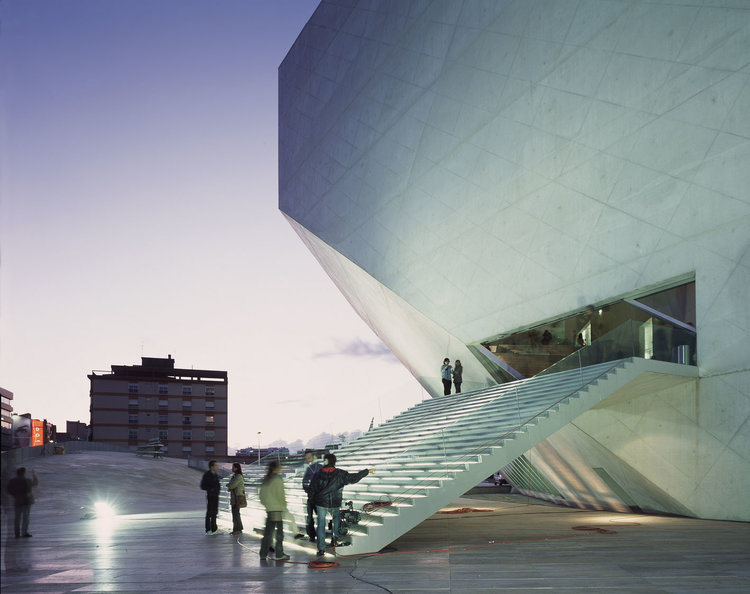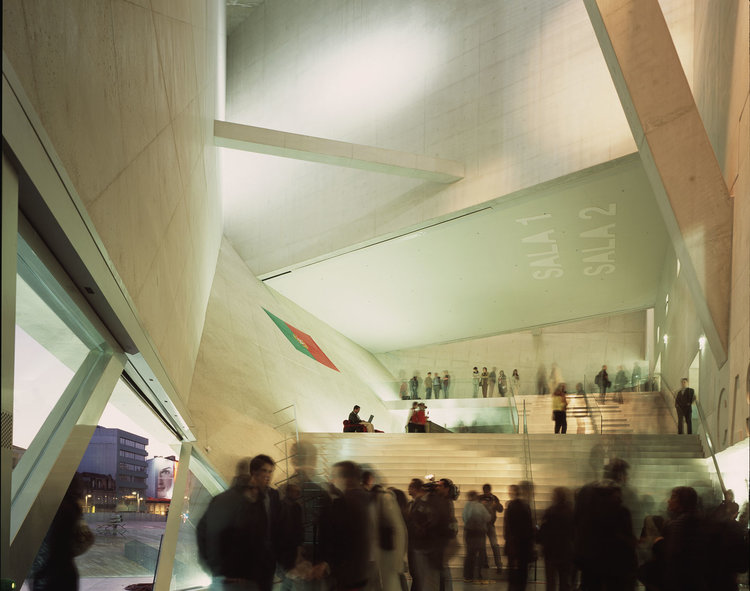PHILIPPE RUAULT: LA BONNE DISTANCE
BY SUSANA VENTURA
SV: I think that it’s almost impossible to understand L&V’s architecture without your photographs regarding the link between the two. How have you met Anne Lacaton and Jean-Philippe Vassal?
PR: Chance and coincidence are essential in that relationship. I work with Jean Nouvel and Rem Koolhaas, who are very much opposed to it at the moment. Anne and Jean Philippe are a third source of discovery and of stimulating interests. I take a bit of both but express it in an original way.
SV: Imagine that you are visiting an L&V’s work for the first time but that you are not supposed to photograph it. As an inhabitant, what would you feel in this first encounter with the work? How would you describe your perception of it?
PR: From the first experience of the architecture of Lacaton & Vassal, all seems effortlessly intelligent and without a demonstrative effect, when, actually, there’s a whole work behind what is apparently evident. The result is a feeling of lightness, well being, simply freedom.
SV: Is there any kind of previous knowledge about the work you’re going to photograph, such as a conversation with Anne and Jean- Philippe about the work – not about the photographs, because I believe they don’t tell you what photographs they want, but about the ideas that we can find in the work from the beginning? Or are you at your own risk?
PR: I met Anne and Jean Philipe after the Maison Latapie, over 15 years ago. We were introduced by a mutual friend, Patrice Goulet, at the Jean Nouvel exhibition at Arc en Rêve in Bordeaux. Then we had passionate discus- sions over a glass of a Bordeaux wine in bars and restaurants. We have some mutual friends and we share common interests in many areas like art, football, or orchids. In fact, it took me a long time to really understand their way of seeing things, of analyzing them, of apprehending the world in general. Their relationship with the world is very original, it stems from all the ideas derived from their great freedom. My character has a very different nature, it is less simple, but I admire their ability of looking at things without a priori moral judgments, so I try to understand and adopt their ways.
SV: When you are taking photos, what happens between you and the work or space that you are photographing? How would you describe the relation between your photographs and the experience you have of space?
PR: Having understood their way of seeing the world, in our conversations, allows me to start the photographic point of view without a specific intent or any preconceived ideas, thus, in total freedom... I would even say in a certain state of indifference, which allows me to escape all the issues, the problems that always arise in architecture photography.
SV: You usually include people in your photographs of an L&V’s work. Actually, all architecture made by L&V has its primary focus on the inhabitants – their desires, their pleasures, their comfort... – and your photographs tend to sublimate the way people appropriate space. But that’s not all: the objects are usually left in space as if they had been casually found and as if there was no one around. We can look at the photographs and see how space is inhabited by the traces we find in it. I believe that there is a kind of realism in your photographs (following a photography tradition) and it’s curious that Dietmar Steiner called the architecture of L&V “dirty realism”. I think this expression is more appropriate if one looks at your L&V’s photographs. What are your concerns, intentions and aesthetic aims when you are shooting?
PR: That distance allows me to photograph people in the same way, without hierarchy, in their simplicity. It is not about making reportage or aesthetically doing sociology, it is not naturalism. I don’t say anything more than what is already there. Everything is there as a finished potential.
SV: There seems to be a perfect harmony between your photographs and L&V’s ideas about the spaces they create. In fact, if one looks at their photomontages (usually made by David Pradel) and your photographs, we sometimes find the same picture or image (we may look at examples of works such as the Mulhouse houses or the Palais de Tokyo). Is it a coincidence or is it on purpose?
PR: It is true that the similarity with the images of David Pradel is troubling, but I believe that we all simply bathe in this same atmosphere of freedom created by the architecture of Lacaton & Vassal.
SV: Nature is a constant presence in your photographs as it is in L&V’s work, and in both it is almost like an inhabitant. What is nature’s importance to you?
PR: Once again, it is important the equality of treatment between all the different elements (nature, objects, and inhabitants) without distinction.
SV: Sometimes, you are asked to photograph an L&V’s work for a second time and after it has been inhabited for long. How do you feel and what do you usually look for when this happens?
PR: Returning to a building by Lacaton & Vassal may be difficult when one had the feeling, thefirsttime,ofhavinglivedthatexperience to the full. The freedom of the first time may be difficult to relive.
APPENDIX: INSTRUMENTS AND TECHNIQUES
SV: What instruments do you use for shooting and, then, for finalizing a picture?
You usually take color photographs. Is there any special reason for this?
PR: I only work in a 4x5 silver color chamber, because there has never been anything different from black and white. It is a false issue, at least, regarding what really matters in architecture photography – i.e., the question oftherelationshipbetweenthephotographer and the thing. Hence, the distance he creates in an original way between himself and architecture.
SV: Do you retouch photographs after shooting to correct anything?
PR:The photographs are taken without retouching, from the very first moment until the time they are used. I don’t touch anything in the building. I try to take advantage of all their potential without artifices.
SV:What makes you reject a photograph?
PR:The photographer’s greatest wish of wanting to create a work of art, of architecture vampirism, makes bad architecture photography. The use of people or objects is a big problem nowadays.


